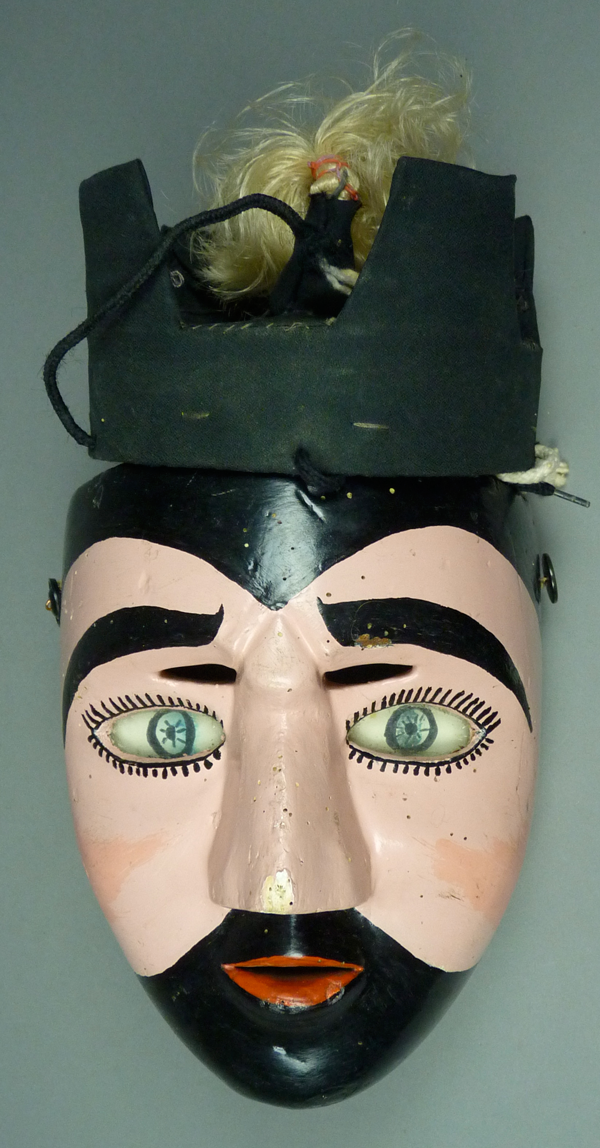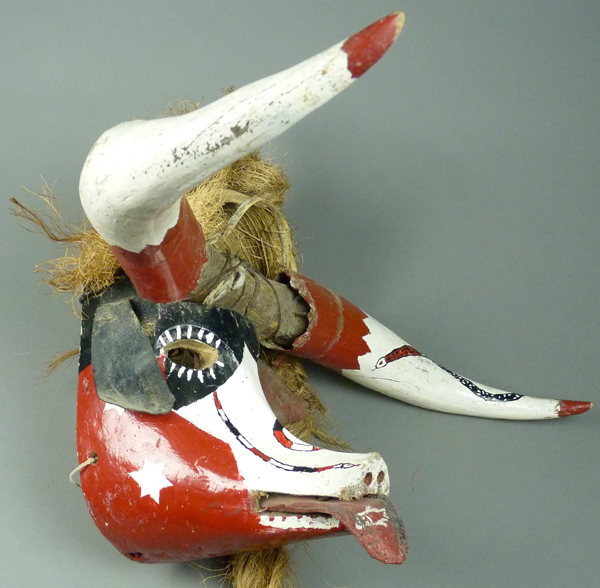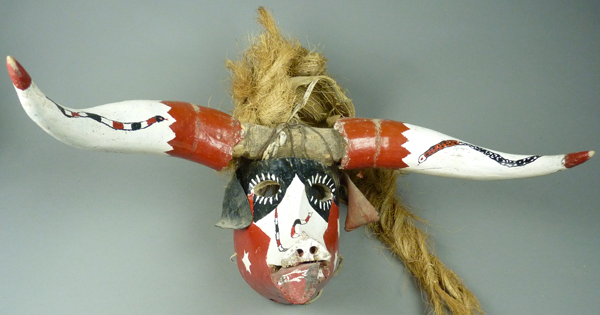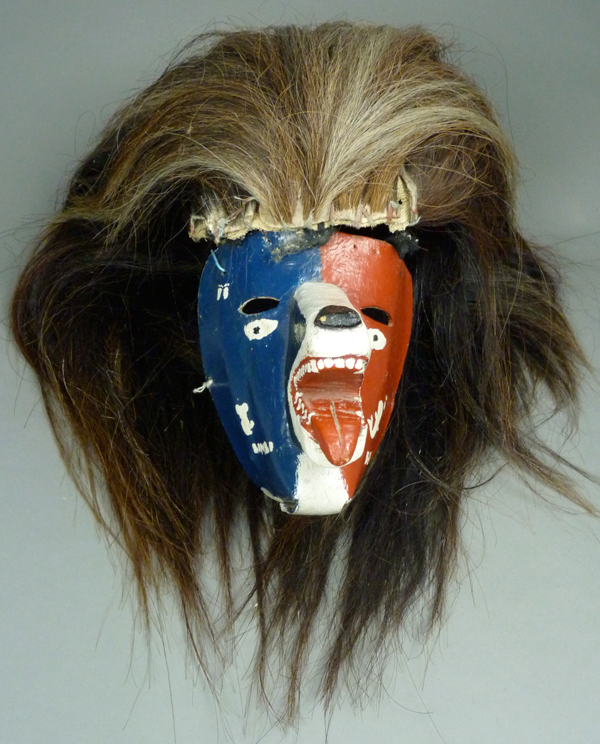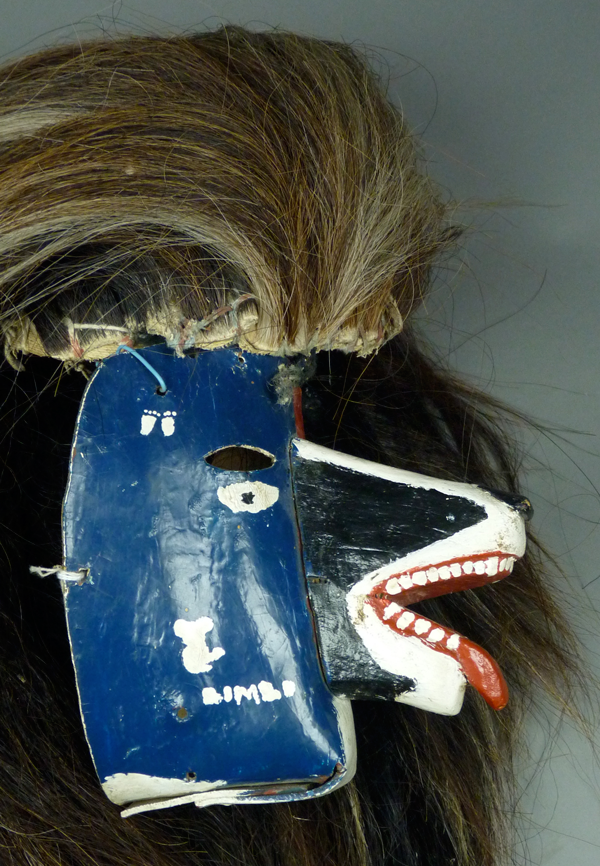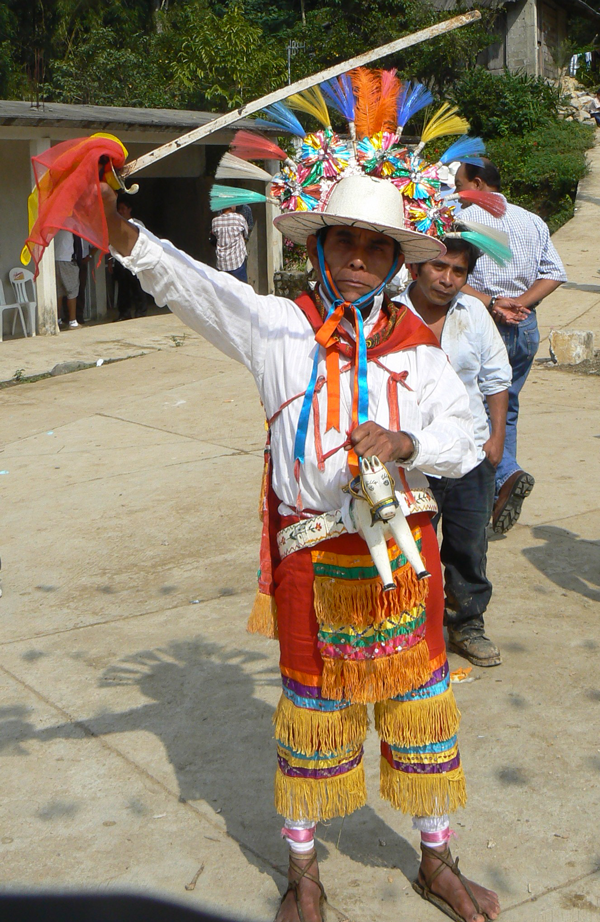From time to time I have used a mask found on EBay™ as the starting point for a post, to illustrate that one can find amazing or interesting masks in unexpected places. Such finds are not without peril; one requires luck, knowledge and experience to sort out the Mexican masks offered on EBay, as these tend to be a mixed lot, with many reproductions that have been falsely aged, along with just an occasional gem. Nevertheless, I have occasionally bought something there due to curiosity alone, in the absence of any sure knowledge, to later wonder whether I have been either lucky or unlucky in this purchase. In fact this is often how one learns about such things, by taking risks and then engaging in a process of research and evaluation to assess the “damage.” Today I will discuss a trio of interesting masks that curiosity alone prompted me to purchase on EBay in 2006. In preparing this post I have developed greater insight about them, particularly due to the recent appearance of Mexican fiesta videos on YouTube™ that broaden one’s knowledge.
In order to set the stage for the trio of EBay masks, I will start with a mask and headdress (or cap) from Naranja, Michoacán. It was labeled as a Fariseo (pharisee) mask for use during Semana Santa (Holy Week/ Easter). According to an exceedingly useful book, Purépecha Masks: 2002 Catalogue, this can also be called a Judas mask. A duplicate in the Catalogue was carved by Eufemio Maya Zavala (of Naranja, Michoacan). In other communities we find a range of similar terms for the masks used during Holy Week—such as Judios (Jews) in San Luis Potosí and Fariseos in Yaqui and Mayo performances. The Fariseos in the latter communities are also said to be the “Soldiers of Rome,” and there are still other communities in Mexico where this sort of language dominates during Holy Week—for example Robenos (Romans) and Centurions.
When I acquired this mask in 1989 it was in excellent condition. Much later it began to shed fine sawdust, indicating that an infestation with boring insects had reactivated. The insects tunneled extensively within the walls of the mask, and although they did not cause significant external damage, the surface of the mask was weakened in spots, So, for example, the tip of the nose became fragile. I treated the infestation with freezing and thawing, which seemed to stabilize the mask. The openings for the eyes are covered with glass on the inside edge, and behind the glass painted paper supplies the images of irises.

